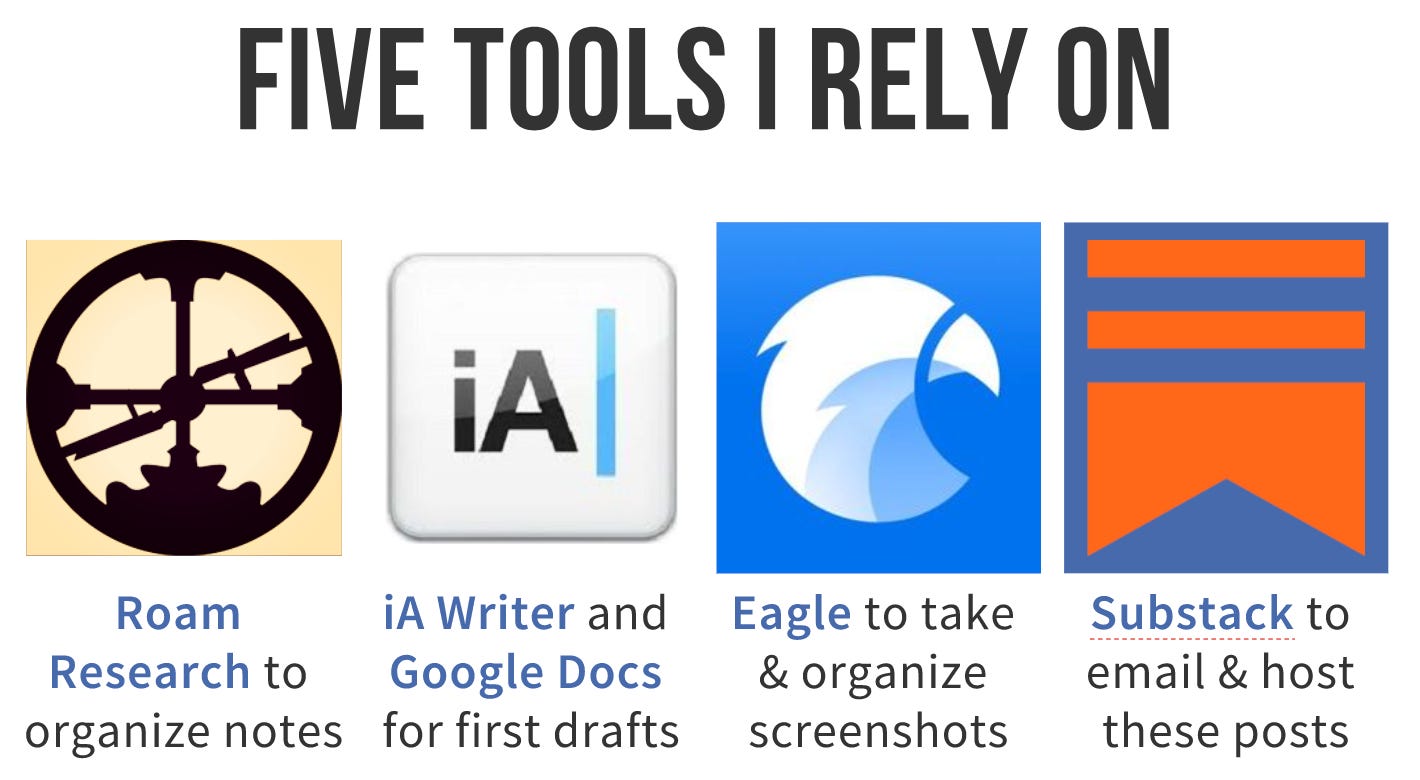How I Write ✍🏻 Wonder Tools
Here are my tools and workflow
I've written more than 100 weekly newsletter posts since beginning this Wonder Tools experiment in April 2020. Thanks for joining me on the journey so far. In case it’s useful, in this post I'm offering a window into my process.
I rely on Roam as my digital notebook for a bunch of reasons, including that it doesn’t require me to file items into folders. …
Keep reading with a 7-day free trial
Subscribe to Wonder Tools to keep reading this post and get 7 days of free access to the full post archives.


